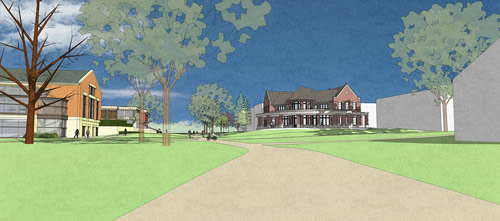Campus Ministry Building Planned for Hope College
Hope College in Holland, MI, is preparing for construction to begin on the college’s new home for its Campus Ministries Program. The structure will reside in the central area of campus, in the place of two older buildings, which are set to be demolished.

The 11,000-square-foot building will include a covered porch, a library, a commons area, and a prayer alcove. The new space, part of a faith formation initiative on campus, will be started in fall of 2018 with the overall project set to be completed in the fall of 2019.